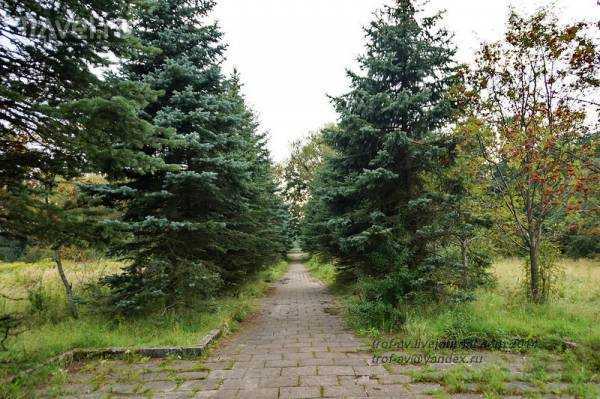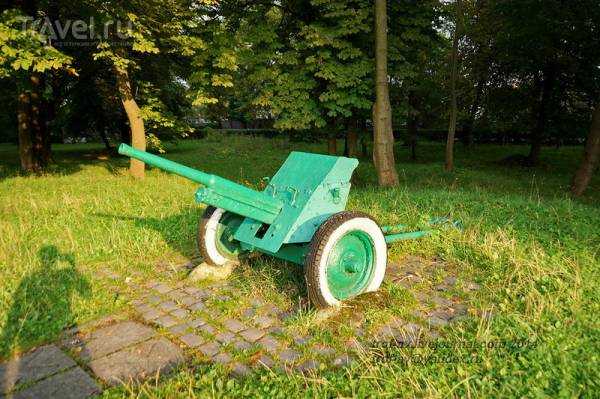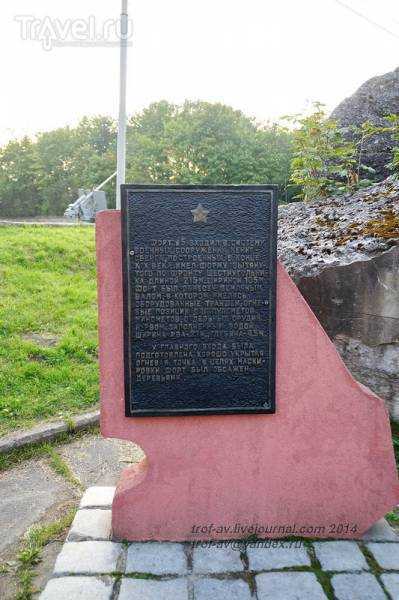
Fort No. 5 - King Friedrich Wilhelm III — a fortification in Kaliningrad that protected the highway to Pillau. It was part of the "Königsberg Night Featherbed" ring of forts. It was named in honor of King Friedrich Wilhelm III of Prussia, who led the state during the war with Napoleon.
In early April 1945, the fort was captured by Soviet troops, the German garrison capitulated, and the fort itself was heavily damaged. Since 1979, it has been designated a museum of the history of the Great Patriotic War. It has been open to the public since 2010. It is a cultural heritage site of federal significance.
In the first part of the photo tour, we will walk around the fort clockwise, and in the second part, we will look at the interior rooms and courtyard of the fort.
The fort was built in the late 19th century. Before the assault on Königsberg, it was further fortified: an anti-tank ditch was dug on the fort's flanks, trenches and artillery positions were constructed, antitank obstacles were installed, and the surrounding area was surrounded by barbed wire and mined. At the time of the assault, the fort's garrison numbered 350 men and was armed with eight cannons, 25 mortars, and up to 50 machine guns.
On April 3, 1945, the fort began to be shelled with high-powered guns, and on April 6, the assault began. Soldiers of the 2nd Rifle Company of the 806th Rifle Regiment crossed the ditch and, under fire, captured the casemate on the right flank. Lieutenant Mirza Dzhabiev and Sergeant A.I. Kondrutsky hoisted the Red Banner there.
However, resistance continued, and the 550th Rifle Regiment joined the assault. The assault on the fort was continued successively, by the 1st Battalion of the 732nd Rifle Regiment and the 2nd Battalion of the 550th Rifle Regiment, taking turns. Command of the assault was entrusted to Senior Lieutenant R.R. Babushkin. Under enemy fire, sappers managed to blow up a casemate on the left flank. As darkness fell, a group of sappers (Sergeant P.I. Merenkov, Senior Lieutenant G.A. Malygin, Private V.K. Polupanov) carried out two targeted explosions to ensure the descent of makeshift crossing equipment to the moat, and then, having crossed the moat, blew up the fort's floor caponier.
After this, the assault troops were able to cross the moat and rushed into the resulting breach. The battle raged inside the fort throughout the night of April 7–8, and only on the morning of April 8 did the remnants of the German garrison capitulate.
(A detailed history of the fort can be seen at Wikipedia)
So, let's begin our tour 🙂
We will walk around the fort clockwise, starting from the road to the fort.
For a better understanding, let's first look at the fort's plan and a modern bird's eye view of the fort.

Fort plan

The road to the fort begins here, at the stele with the inscription "Kaliningrad"


In front of the fort, near the destroyed barracks, a memorial was erected to the Soviet soldiers who died during the assault.

Names on the memorial

Bas-relief


The remains of a destroyed barracks behind the memorial


To prevent anyone from climbing through the ruins, the passage is bricked up.

View of Fort No. 5 from the memorial, the entrance to the fort is on the left side

Right half-caponier


Military equipment is stationed near the fort. This is the well-known ZIS-3.

the same

Guides from Katyusha

View of the memorial and the moat

45mm anti-tank gun, either 19-K or 53-K. The upper part of the protective screen is clearly a replacement for the lost one.

Another ZIS-3

The 85mm anti-aircraft gun, model 1939, 52-K, interestingly, has a protective screen (a great rarity).

A memorial stone with the names of Heroes of the Soviet Union

And this is a German firing point destroyed by high-power artillery.

Characteristics of the fort on the memorial plaque


A firing point from the main entrance to the fort


View of the moat from the entrance to the fort

Source: travel.ru

